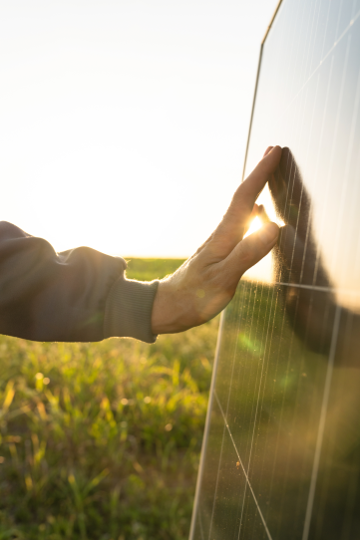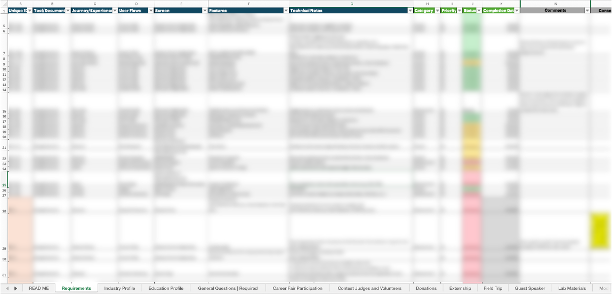Workforce Development Strategy

Client
National Workforce Development Association
Year
2025
Skills
Program & Product Management Team Leadership Strategic Facilitation
The Challenge
As the U.S. energy landscape evolves, industries and educators are under pressure to prepare the next generation of workers for emerging roles in clean energy, infrastructure, and utilities. The organization needed to redefine its long-term strategy, strengthen alignment between education and industry, and modernize its digital tools to better connect stakeholders.
As Delivery Lead and Program Manager, I guided the engagement from strategy to launch, blending delivery rigor with innovation. My focus was to bring product management techniques into a traditionally non-digital environment, build a clear roadmap, and empower my team to grow by owning dedicated workstreams while I led strategy, QA, and facilitation.

The Process
Phase 1: Vision & Strategy Redefinition (2 months)
Our first priority was clarity. The organization had an ambitious mission but needed alignment across its ecosystem.
I led a series of visioning and prioritization sessions with leadership, educators, and industry stakeholders to define strategic goals and near-term priorities. Rather than starting from scratch, we refined their mission to reflect energy transition trends and Career & Technical Education (CTE) workforce pathways.
My role and methods
I facilitated ideation and prioritization sessions that helped stakeholders articulate and sequence their goals. I built a program plan that assigned each team member ownership of a workstream, from research and curriculum design to communications. My role was to guide, support, and review, while giving the team space to lead and develop their own voices. Weekly QA and strategy checkpoints kept momentum and ensured alignment.
Phase 2: Research, Ideation & Digital Feasibility (5 months)
With strategy in place, the focus shifted to execution. My goal was to translate the vision into tangible deliverables and lay the foundation for digital transformation.
We conducted a full assessment of the client’s digital ecosystem to understand what could realistically be built using their existing vendors. This groundwork helped the organization secure a grant to enhance its platform capabilities.
I led a series of ideation and validation sessions with educators and industry partners to shape the concept for the EnergyConnector platform. We created early mockups, defined user journeys, and developed requirements based on real user input.
Meanwhile, my team focused on developing a set of “How-To Guides” and toolkits for educators and industry partners at different levels of digital maturity. Each toolkit offered best practices, calls to action, and examples of how to integrate CTE and Energy & Natural Resources cluster learning into classrooms or workforce programs.
All assets were integrated into the organization’s website and outreach materials, improving visibility and adoption.



Phase 3: Build, Launch & Sustainment (5 months)
The final phase focused on execution and long-term ownership. I led the functional build and testing of the EnergyConnector platform and embedded product management best practices into the process.
Product management approach
I managed sprint planning, backlog prioritization, and requirement traceability while coordinating across internal teams and external partners. I facilitated user testing sessions with educators, employers, and students to refine the platform experience. Together with our outreach and content leads, we developed training videos, launch toolkits, and marketing collateral to drive adoption.
As part of our closeout, we created a sustainment and governance plan to help the client maintain and scale the platform. This included coaching their internal teams on product management principles, defining ownership roles, and setting up a roadmap for future releases.

The Impact
This initiative is shaping the future of the American energy workforce. What began as a digital modernization effort evolved into a national platform that connects education and industry in a meaningful way.
Educators can now access aligned CTE and Energy & Natural Resources resources that bring real-world energy concepts into classrooms. Industry partners have tools to collaborate with schools and training programs, strengthening the talent pipeline. Students and emerging professionals are discovering career pathways that power the country’s transition to a sustainable future.
The result is more than a platform. It’s a national movement to connect learning with opportunity and to help people build careers that matter.
Reflection
Leading this program reminded me how effective product management can be when paired with empathy and purpose. It required balancing delivery discipline with human connection—mentoring my team, navigating ambiguity, and keeping everyone aligned through shared vision and structure.
This project reaffirmed my belief that innovation techniques like co-creation and agile delivery can spark real transformation when applied to mission-driven work. It was deeply rewarding to see our strategy come to life through tools that will continue empowering the next generation of the energy workforce.










